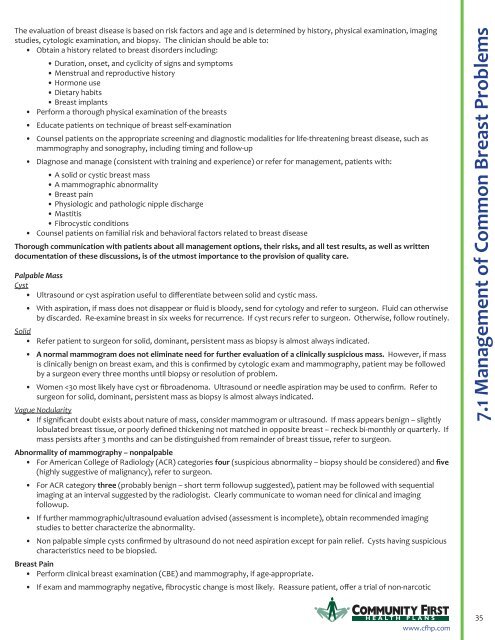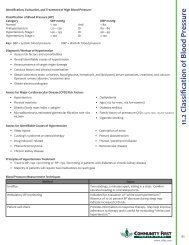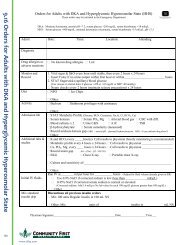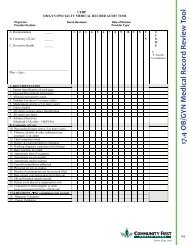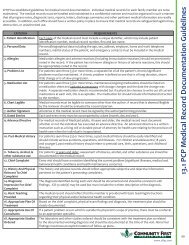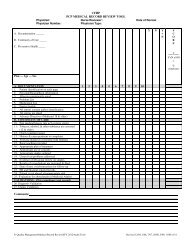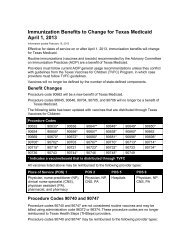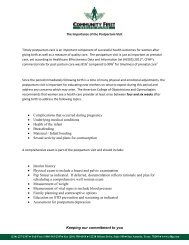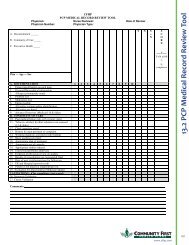Full Clinical Guidelines - Community First Health Plans.
Full Clinical Guidelines - Community First Health Plans.
Full Clinical Guidelines - Community First Health Plans.
Create successful ePaper yourself
Turn your PDF publications into a flip-book with our unique Google optimized e-Paper software.
The evaluation of breast disease is based on risk factors and age and is determined by history, physical examination, imaging<br />
studies, cytologic examination, and biopsy. The clinician should be able to:<br />
• Obtain a history related to breast disorders including:<br />
• Duration, onset, and cyclicity of signs and symptoms<br />
• Menstrual and reproductive history<br />
• Hormone use<br />
• Dietary habits<br />
• Breast implants<br />
• Perform a thorough physical examination of the breasts<br />
• Educate patients on technique of breast self-examination<br />
• Counsel patients on the appropriate screening and diagnostic modalities for life-threatening breast disease, such as<br />
mammography and sonography, including timing and follow-up<br />
• Diagnose and manage (consistent with training and experience) or refer for management, patients with:<br />
• A solid or cystic breast mass<br />
• A mammographic abnormality<br />
• Breast pain<br />
• Physiologic and pathologic nipple discharge<br />
• Mastitis<br />
• Fibrocystic conditions<br />
• Counsel patients on familial risk and behavioral factors related to breast disease<br />
Thorough communication with patients about all management options, their risks, and all test results, as well as written<br />
documentation of these discussions, is of the utmost importance to the provision of quality care.<br />
Palpable Mass<br />
Cyst<br />
• Ultrasound or cyst aspiration useful to differentiate between solid and cystic mass.<br />
• With aspiration, if mass does not disappear or fluid is bloody, send for cytology and refer to surgeon. Fluid can otherwise<br />
by discarded. Re-examine breast in six weeks for recurrence. If cyst recurs refer to surgeon. Otherwise, follow routinely.<br />
Solid<br />
• Refer patient to surgeon for solid, dominant, persistent mass as biopsy is almost always indicated.<br />
• A normal mammogram does not eliminate need for further evaluation of a clinically suspicious mass. However, if mass<br />
is clinically benign on breast exam, and this is confirmed by cytologic exam and mammography, patient may be followed<br />
by a surgeon every three months until biopsy or resolution of problem.<br />
• Women


